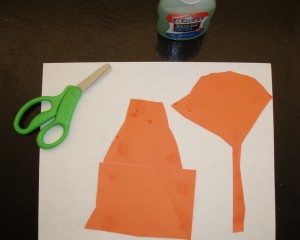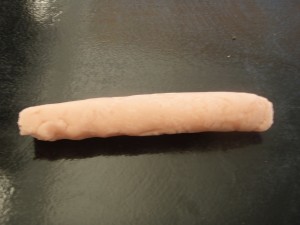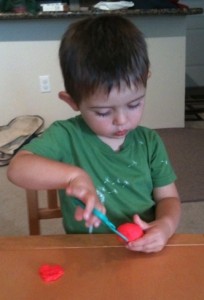Ever wonder why every preschool, kindergarten and first grade have a myriad of cut and paste projects? There are so many integrating skills that develop when using scissors. In a perfect world, early childhood programs would throw away all the pencils and have the students cut out strips of paper and combine to form all their letters and words.
Scissor cutting helps teach the muscles in the hands and fingers how to work in a precise manner (e.g. as required for writing and drawing). And there is so much more…
Benefits:
- The thumb moves away from the hand while the fingers stabilize the scissors. This facilitates independent movement of each finger.
- The muscles required for working a pencil get stronger.
- Cutting requires the use of two hands, a bilateral skill.
- Cutting requires the eyes to direct the hand motions, a hand-eye task.
- Cutting requires some directional sense, a visual perceptual task.
- Cutting can be used for an art project (creativity), language project (reading skills), Math/Science,etc.
- Cutting requires some precision, thereby improving fine motor dexterity.
Here are some suggested activities per age level:
Baby to Three: No cutting. Provide recycled paper to tear up. This builds bilateral motor coordination. It also requires use of the finger TIPS to rip successfully. This further strengthens the fingers.
3 years: Close supervision and blunted scissors are a must. The fingers are just beginning to manipulate scissors so very simple snipping activities should be done. Here are a few:
- Roll clay snakes or coils, assist the child in holding the coil while snipping into chunks.
- Snip plastic or paper straws.
3+-4 years: Once the child can successfully and independently do the above move on to:
- Snipping tickets: Use one inch strips of index cards.
- Snipping fringe: Start with index cards and move on to paper, which is more difficult to manage.
- Try cutting paper in half.
- Index cards are rigid and easier to cut than paper.
4+ years: Once the child can easily cut legal sized paper in half, more accuracy can develop. Go back to:
- Index cards initially to work on directionality (i.e. how to move the scissors to follow specific directions).
- Cut out shapes (square, triangle) drawn on index cards.
- Cut out pictures from magazines, etc.
- Repetitive cutting (e.g. paper strips) builds endurance and strength in the hand (and focus for the mind).
- Provide glue so miscellaneous strips and shapes can be glued to paper to create an “Abstract Masterpiece.”
- Projects can get “bigger,” such as cutting out brown paper bags and packaging paper.
5 years: Proficiency in cutting should easily develop now. The child can enjoy cutting out simple shapes drawn on paper and work some details. Cutting should become a regular activity at this point as the maturing fingers really need this exercise to prepare for the arduous task of holding a pencil correctly.
- Cut out traced shapes and use to create pictures.
- Cut out letters and numbers from newspaper headlines.
- Continue free form cutting for art creations.
- May be strong enough to cut out cardboard for three dimensional projects.
5+ years on: Detailed cutting can begin. Start with small projects. These may become more elaborate as the child’s proficiency and stamina grow.
- Create collages
- Cut out words to make stories
- Compile scrap books compiled from summer activities
- Make a kite
Materials:
- Good scissors. This site does not promote specific products as a rule, but for a neophyte scissor cutter, high quality scissors are key. There is nothing more frustrating for a child then attempting to cut paper and have it bend and tear. This is that fastest route to quitting. I have found Friskar blunted tip preschool scissors consistently reliable. A specialized preschool scissor can be ordered as well. Link found below.*
- Save up those magazines, newspapers and JUNK MAIL. The Recycling Center won’t mind.
- For the younger child, invest in the small size index cards. If you work at an office, look for discarded cards and paper.
- Save shoe boxes, etc. for the young architect/builder. Cutting these up and pasting together help build even more spatial reasoning skills.
- Not just paper goods: save discarded string, ribbon, etc. The child will use these materials creatively.
- Glue
- Save wrapping paper and tissue paper. For the older child who really wants to create, buying a package of colored tissue paper can offer new opportunities. This paper is difficult to cut so requires even more skill in cutting ability.
- Scrap fabrics can be used. These are also difficult to cut so best to use for the Kindergarten++ child.
- The library might have some arts and crafts books for ideas on inexpensive scissor cutting activities.
I DO NOT recommend purchasing workbooks to practice cutting. Save this for the classroom. Allow the child to create, invent and enjoy the process of cutting materials. Guaranteed, the child will spend more time with an activity that is a self creation or a simple project. Zig zags and curves will likely get about five minutes of cutting practice from the child. With a fun activity, it is likely that the child will stay involved for a much longer time.
And about those annoying scraps of paper all over the floor. Ask your child to pick up the big pieces to recycle. The retrieval will require the use of the pincer grasp, which guess what-makes the fingers stronger!
There will still be many scraps scattered about. Haul out the vacuum and in five minutes YOU are done.
Resources for scissor craft activities:
* http://www.therapro.com:80/Easy-Papercraft-Projects-P4760C4755.aspx
http://www.ot-mom-learning-activities.com/cutting-activities.html
More on cutting
http://wondertime.go.com/create-and-play/article/scissors-tips.html
*Specialized Scissors:
http://www.therapro.com:80/Childrens-Learning-Scissors-aka-Benbow-Scissors-P4720C4718.aspx



No Pings Yet